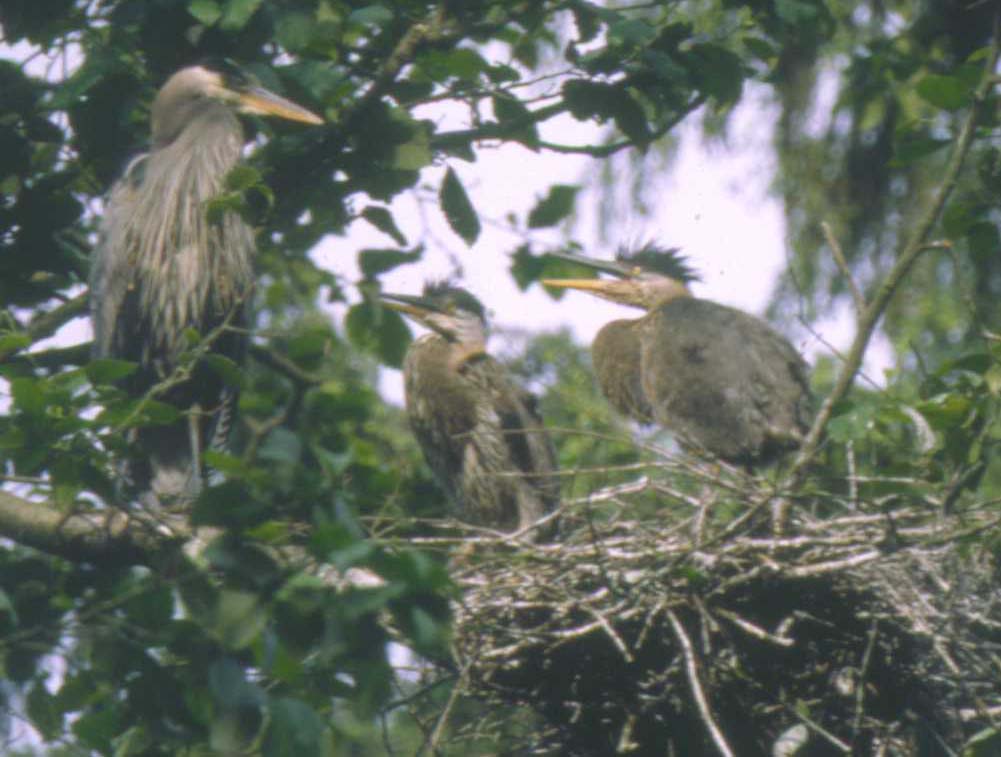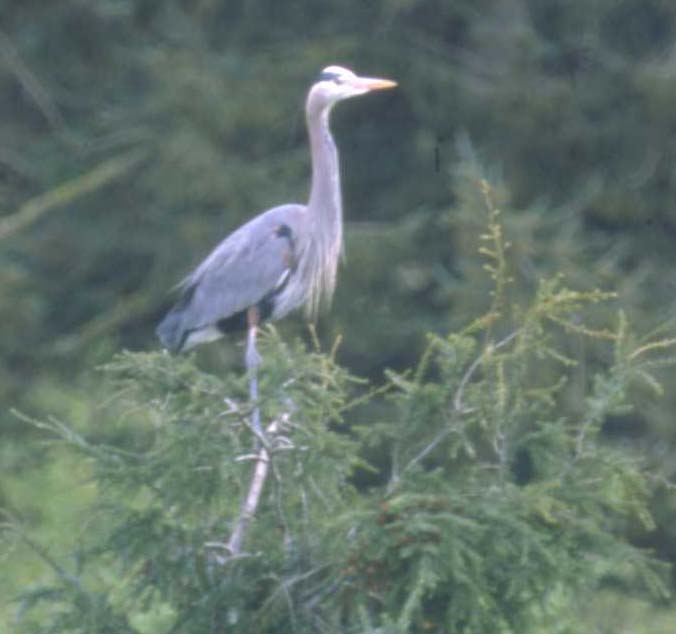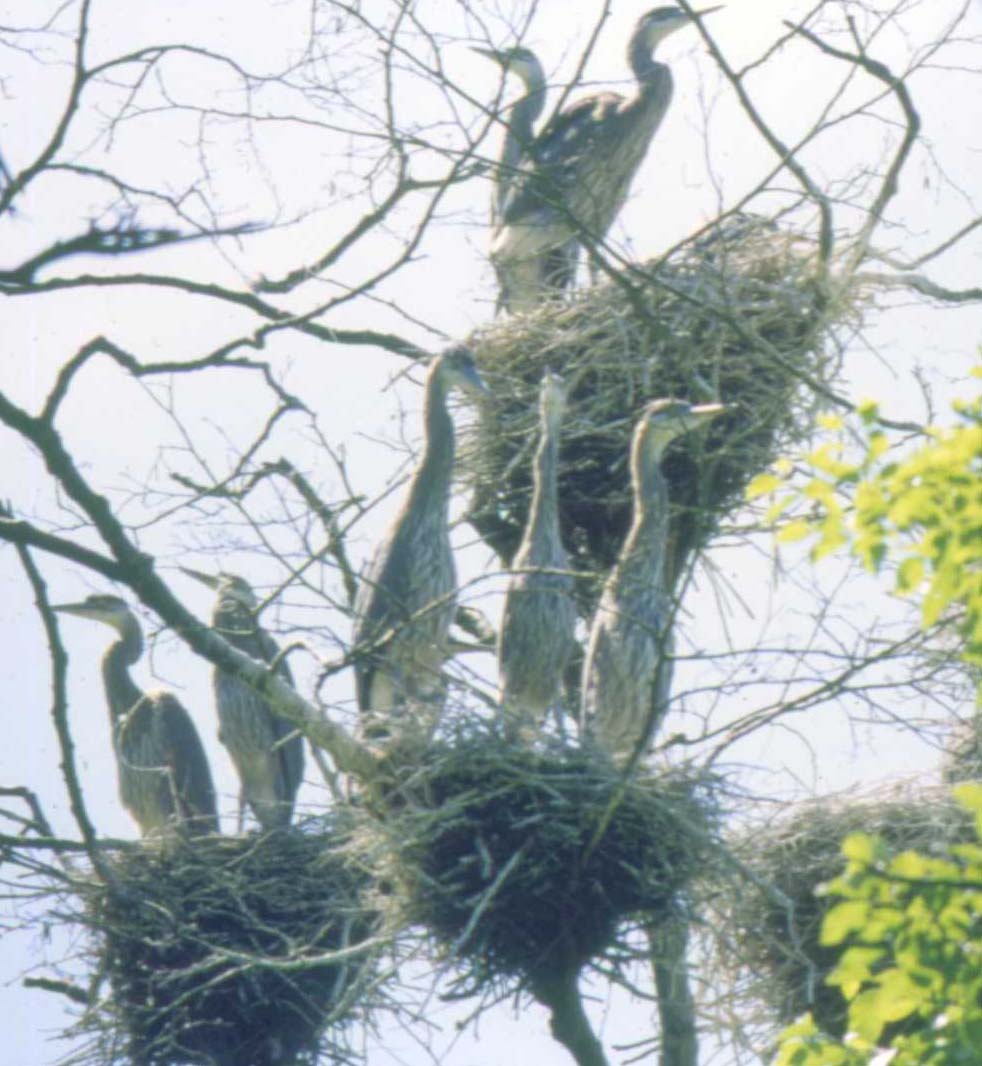
(Ardea herodias)


(Studied by CWE researcher
Ross
Vennesland)
The
Great Blue Heron (Ardea herodias) is a familiar sight to many people
along the coast of British Columbia. Herons dot our beaches during the
summer months, standing in lines by the water‚s edge like seashore sentinels.
The Great Blue Heron has been an important part of the art and mythology
of coastal British Columbia for thousands of years, and as an indicator
species, the heron population acts as a bellwether for the health of our
natural surroundings.
Heron
research in the Centre for Wildlife Ecology at Simon Fraser University,
being conducted by Ross
Vennesland, is currently focused on the responses of breeding herons
to disturbance from humans and predators, and the long-term impact such
disturbances will have on the productivity and distribution of heron breeding
colonies in British Columbia. Concern
has been raised about the productivity of coastal BC herons because of
population declines observed on Vancouver Island and the Sunshine Coast
and an increase in the frequency of breeding abandonment since 1971. The
population decline and increase in breeding failure are likely due to increased
disturbance from Bald Eagles and humans. Many colonies have abandoned because
of eagle and human disturbance over the past few years, and this process
will likely accelerate as the populations of these antagonists continue
to expand. As disturbance increases, it is likely that herons will be forced
to change breeding locations more frequently than in the past. Herons
in British Columbia breed mostly in colonies ranging in size from two to
400 breeding pairs. About 80% of coastal herons breed in several large
colonies concentrated around the expansive foraging areas provided by the
Fraser River estuary. Colonies are located in secluded woodlots and in
highly developed areas such as urban parks. Heron colonies are not static
entities and may shift locations from time to time, though it is difficult
to predict how long a group of herons will use a particular site. Many
sites are used for many decades, while others are only used for a few years.
Herons
in British Columbia breed mostly in colonies ranging in size from two to
400 breeding pairs. About 80% of coastal herons breed in several large
colonies concentrated around the expansive foraging areas provided by the
Fraser River estuary. Colonies are located in secluded woodlots and in
highly developed areas such as urban parks. Heron colonies are not static
entities and may shift locations from time to time, though it is difficult
to predict how long a group of herons will use a particular site. Many
sites are used for many decades, while others are only used for a few years.